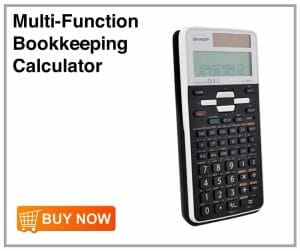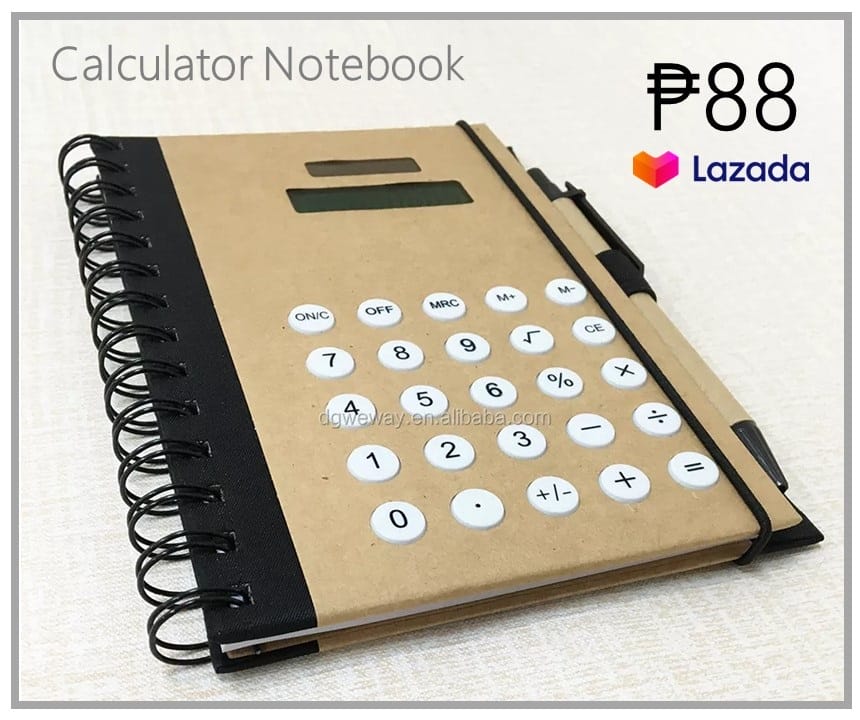Table of Contents
Managing your finances can be quite a challenge, especially when you understand how banks calculate interest on your accounts. One key piece of that puzzle is the average daily balance (ADB), a method that helps determine the interest earned or charged over a specific period. But fret not—computing ADB doesn’t have to be intimidating! In this guide, we’ll walk you through three simple methods you can use to compute ADB and demystify this important financial concept.
Whether you’re keeping an eye on your savings account, monitoring credit card balances, or just trying to improve your financial well-being, knowing how to compute ADB will give you the power to take control. With just a few simple steps and some basic math skills, you’ll gain insight into how much interest you can earn or save. So, let’s jump in and uncover these simple techniques that will make managing your money not only easier but also more rewarding!

Understanding Average Daily Balance (ADB)
Understanding your average daily balance (ADB) is essential when managing your savings and investments. ADB helps Filipinos keep track of how much money is in their accounts over a certain period of time. To compute ADB, you add up the daily balances for each day within a specific time frame and then divide that total by the number of days in the period.
By understanding how to compute ADB, you can gain really helpful insights into your spending and saving habits. For example, if you consistently see your balance dropping during specific periods, it might be a good idea to rethink your spending or adjust your budgeting strategies. Plus, knowing about ADB can help you make the most of your savings interest; higher averages can lead to better returns on products like savings accounts or time deposits. Having this knowledge puts you in control of your finances and helps you build healthier saving habits over time.

What is Average Daily Balance?
It’s important to grasp the concept of average daily balance (ADB) for managing your finances like a pro. ADB is basically the average balance in your bank account over a set period, usually calculated daily. Understanding ADB can give you some really helpful insights into how you spend and save, which can help you make smarter money moves.
One of the lesser-known advantages of tracking your ADB is its potential impact on finance-related bonuses and fees. Many banks in the Philippines reward customers with higher interest rates based on their ADB or waive maintenance fees when certain daily balances are maintained. By diligently monitoring how to compute ADB each month, you can strategically time deposits or withdrawals to maximize your earnings while minimizing costs—creating a win-win scenario that elevates your financial savvy.
Moreover, regularly assessing your average daily balance paves the way for better budgeting practices. It encourages you to keep track of inflows and outflows more meticulously, leading to increased awareness of spending leaks that may go unnoticed otherwise. Ultimately, understanding how to compute ADB isn’t just an exercise in number crunching; it’s about gaining control over your finances and making them work harder for you as part of a larger strategy toward financial empowerment.
Importance of ADB in Personal Finance
Understanding the average daily balance (ADB) is crucial for effective personal finance management, especially in a landscape where financial decisions can significantly impact one’s future. By learning how to compute ADB, individuals gain insight into their spending behavior across various accounts. This awareness empowers them to strategize better, making informed choices on saving and investing that align with their financial goals.
Remembering to keep an eye on your average daily balance (ADB) can really help with budgeting. In a place like the Philippines, where unexpected expenses can pop up due to things like typhoons or changing market conditions, understanding your ADB can provide some financial security. It’s not just about saving money, it’s also about being smart with your spending. By paying attention to your ADB, you can develop better money habits and work towards greater financial stability in the long run.
How to Compute ADB #1: Basic ADB Calculation Explained
To compute ADB (average daily balance), you’ll first need to gather your daily account balances for a specific period, typically a month. Begin by listing out the balance of your bank account for each day throughout this timeframe. It’s essential to include every single day, as even minor fluctuations in your balance can impact the final calculation significantly.
Once you’ve got your daily balances ready, the next step is simple: just add up all those daily figures. Once you have the total, divide it by the number of days in the period you’re looking at, usually 30 or 31 days in a month. This basic ADB computation gives you insight into how much money is flowing in and out of your account, and it can also highlight times when you’re spending more or saving more. By keeping track of ADB regularly, you can improve your budgeting skills and make better decisions about saving and investing for financial growth, especially in a Filipino context.
How to Compute ADB #2: Using Online Banking Tools
One of the easiest ways to compute ADB is by leveraging your online banking tools. In the Philippines, many banks provide convenient digital platforms that allow you to easily view your account statements and transaction history. With just a few clicks, you can download your bank statement and access all the important details you need, like daily balances and transaction dates. These online banking tools are designed with user-friendly interfaces and helpful features to make it simpler for you to spot any significant changes and understand how they affect your overall balance.
Additionally, many bank apps now come equipped with built-in calculators or summary features that may automatically compute ADB after a specific period. This means less manual work for you! By simply selecting the date range you’re interested in, these smart solutions streamline the process and provide insights into spending patterns and savings habits over time. Embracing these digital resources not only saves time but also empowers you to make informed financial decisions, helping you maximize interest earnings on your deposits while keeping track of expenditures effortlessly. So why not take advantage of technology to compute ADB more efficiently?
How to Compute ADB #3: Employing Mobile Apps for ADB
In today’s digital age, leveraging mobile apps to compute ADB can streamline your financial management with just a few taps on your smartphone. Various banking and budgeting applications now incorporate features that automatically calculate the average daily balance (ADB), making it easier for Filipinos to keep track of their finances without sifting through countless bank statements. These tools not only enhance convenience but also empower users with real-time updates on their account balances, allowing for more informed spending decisions.
Some cool finance apps not only help you save money but also give personalized tips based on your spending. By linking these apps to your bank account, you can see how you’re spending your money and make smart choices to save more. Plus, they use fun visuals to show you how you’re doing financially—it’s a great way to stay motivated and stick to your budget. Using these apps takes the stress out of managing your money and helps you build healthy financial habits for the future.
Common Mistakes to Avoid When Calculating ADB
When you compute ADB, one of the most common mistakes is neglecting to account for incomplete statements. If you’re calculating your average daily balance from a period where transactions were made but not fully reflected in your statements, you risk inflating or deflating your actual balance. Always ensure you’re working with an up-to-date and complete set of transactions to get an accurate figure.
Don’t forget to keep this in mind: Another common mistake is using the wrong time frame. Sometimes people accidentally calculate their average daily balance over a month instead of the specific billing cycle used by their bank. This mistake can cause confusion when it comes to understanding interest rates or fees tied to low balances. By making sure you’re calculating based on the correct period determined by your bank, you can steer clear of any unpleasant surprises and get a better grasp of how your everyday actions impact your savings or loan status. Always take a moment to double-check which dates are relevant for a more accurate understanding of how to effectively manage your finances!
Tips for Effective Financial Management Strategies
When diving into effective financial management, understanding how to compute ADB (average daily balance) is crucial for Filipinos looking to track their savings and optimize their interest earnings. Here’s a great tip for you: Try keeping a daily spending journal. Not only will it help you keep track of your expenses, but it’ll also let you record any deposits you make. This will give you a clear picture of your cash flow and help you understand which days your balance goes up and down. It’s super helpful for calculating your average daily balance accurately.
Another thing you can do is categorize your transactions into fixed and variable expenses. This way, you can easily see where you can save money and increase your average daily balance over time. Make it a habit to check your account activity regularly; this will help you spot any spending trends and adjust your habits throughout the month.
Lastly, consider setting up alerts for low balances or any unusual activity in your account. It’s a great way to stay on top of your finances and work towards boosting that all-important ADB figure!
Final Words: How to Compute ADB
Understanding how to compute ADB (average daily balance) is important for Filipinos who want to handle their money wisely. This calculation not only helps you keep track of your account balance but also helps you earn more interest and avoid unnecessary bank fees. By following the simple steps I mentioned earlier, you can easily keep an eye on your daily balances over a specific period and use this information to make better financial decisions in the future.
Knowing the ins and outs of ADB can also give you more confidence when discussing terms with banks or evaluating savings options. When you calculate ADB accurately, you get a better idea of your cash flow patterns and spending habits, which can help you make smarter choices about budgeting and saving. Whether you’re thinking about investing or just want to make your monthly budget go further, mastering this skill will set you up for better financial health in the long run. So why wait? Learning how to calculate ADB could be the key to smarter financial management!









